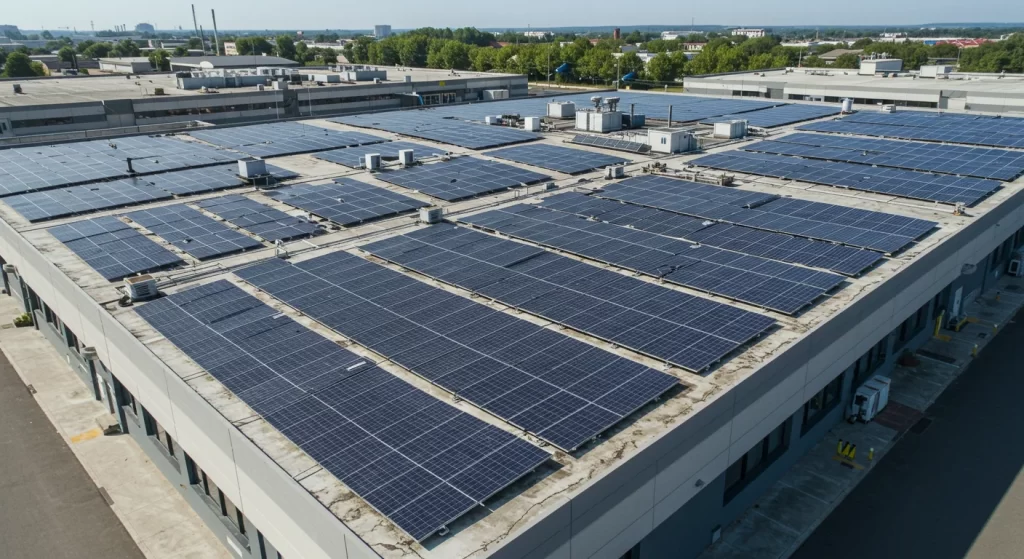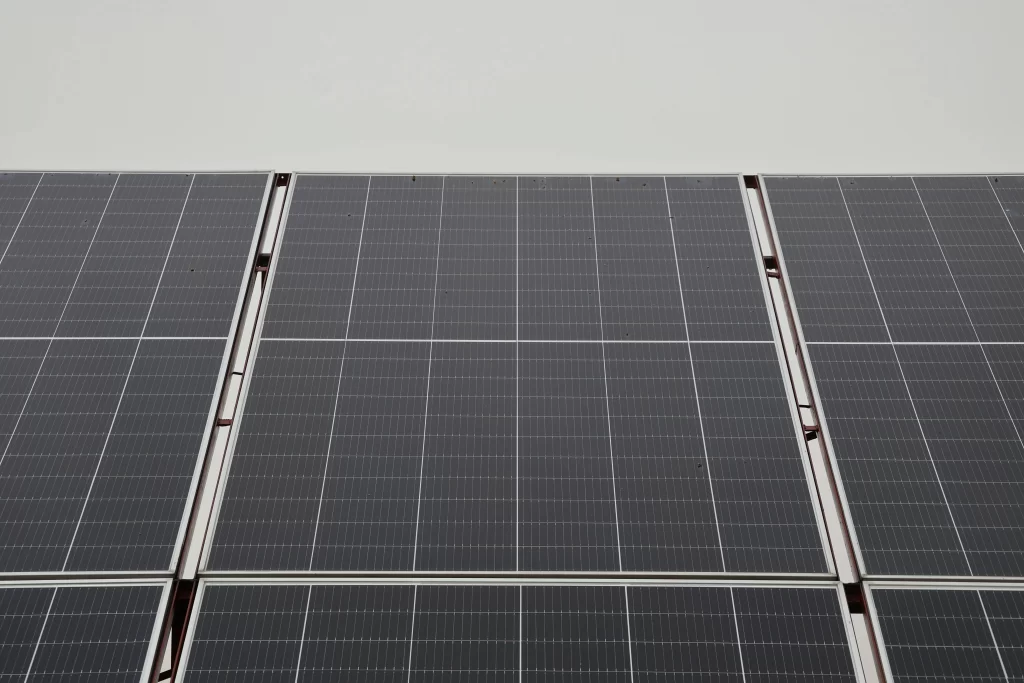
Solar Power for Business: The Smart and Sunny Choice
As the world accelerates its shift toward sustainability, businesses are facing a pivotal moment – not only to reduce their energy costs but also to make a meaningful impact on the environment. The global shift toward renewable energy isn’t just a fleeting trend; it’s a powerful transformation reshaping industries worldwide. More businesses are realizing that investing in solar energy isn’t just a responsible, eco-friendly choice – it’s also a smart and financially sound decision that brings tangible returns.
From saving money on electricity bills to achieving sustainability goals, businesses of all sizes can benefit from the growing trend of solar adoption. Let’s explore how solar energy for business can revolutionize your operations, lower energy costs, and elevate your company’s role as a leader in sustainability and innovation.
Is Solar Energy Worth It for Businesses?

The first question on every business owner’s mind: Is solar energy truly worth it? The short answer is yes, and here’s why. As corporate sustainability goals continue to evolve, businesses are aligning themselves with global demand for renewable energy. It’s not just about being environmentally conscious - solar energy is an investment that directly impacts your financial bottom line.
Businesses can save 20-30% on their energy bills by switching to solar power, meaning companies can start saving immediately. But the benefits don’t stop there. Adopting solar power also significantly reduces your carbon footprint, which plays a crucial role in meeting Environmental, Social, and Governance (ESG) criteria. This is increasingly important for maintaining a positive public image, attracting investors, and staying competitive in an eco-conscious marketplace.
How Solar Energy Works for Businesses
Understanding how solar energy works can help you make an informed decision. There are various solutions and components that businesses can use to effectively integrate solar energy into their operations.
Types of Solar Solutions
- On-Site Solar Panels: (The most common solution) These can be mounted on roofs or placed on the ground, helping businesses generate their own electricity and reduce grid reliance.
- Solar Leases & Power Purchase Agreements (PPAs): Ideal for businesses concerned about upfront costs, these options allow installation with little to no initial investment while providing energy at lower rates than conventional electricity bills.
- Commercial vs. Industrial Solar: Smaller businesses typically choose commercial installations, while industrial operations may require more robust, customized systems to meet higher energy demands.
Key Components
- Solar Panels: The system’s core, converting sunlight into direct current (DC) electricity.
- Inverters: Convert DC electricity into alternating current (AC) for business use.
- Energy Storage Systems: Batteries store excess energy for use during off-peak hours or cloudy days.
Want to learn more about solar panels? Click here.

Financial Benefits and Incentives
Switching to solar isn’t just about reducing your carbon footprint - it’s also about improving financial performance.
Cost Savings
The financial benefits are substantial, with most businesses seeing a 5-7 year payback period on solar investments. After this period, energy savings cover installation costs, and businesses benefit from free, clean energy for years. Reduced electricity bills provide immediate advantages, while fixed energy generation costs help improve profitability.
Government Incentives
• Federal Solar Tax Credits: The Investment Tax Credit (ITC) allows businesses to deduct 26% of installation costs from federal taxes.
• State Grants & Rebates: Many states offer additional incentives, making solar even more affordable.
Financing Options
Solar loans, leases, and third-party financing models make adoption accessible for businesses of all sizes without requiring heavy initial investments
Steps to Transition to Solar Energy

Transitioning to solar energy is simpler than you might think. Here’s how to get started:
- Assess Energy Needs:
- Conduct an energy audit to understand consumption patterns
- Complete a feasibility study to determine optimal system size
- Identify where solar can be most effective for your operations
- Choose a Solar Provider:
- Select an experienced provider with proper certifications
- Verify local expertise and knowledge of regulations
- Review their track record of successful installations
- Get multiple quotes for comparison


- Installation and Maintenance:
- Let provider handle all permitting and paperwork
- Schedule installation at optimal time for your business
- Learn basic maintenance requirements
- Set up performance monitoring
- Plan for periodic professional inspections
Overcoming Common Challenges
- Upfront Costs:
- Consider group purchasing programs
- Explore phased installation options
- Leverage available financing solutions
- Take full advantage of tax credits and rebates
- Calculate long-term ROI to justify investment


- Space Limitations:
- Utilize rooftop systems effectively
- Consider solar carport installations
- Explore ground-mounted options if space allows
- Implement high-efficiency panels to maximize output
- Consider shared solar programs if on-site space is insufficient
Future Trends in Commercial Solar Energy
The future of solar power for business is radiant with promise, offering savvy leaders a chance to harness cutting-edge innovations and shifting policies to drive both profit and purpose. Imagine bifacial panels silently maximizing energy harvest from dawn to dusk, turning even indirect sunlight into tangible savings. AI-driven systems now analyze your energy patterns in real time, optimizing consumption like a shrewd financial advisor—trimming waste, slashing costs, and freeing capital for growth.
Meanwhile, carbon pricing and renewable portfolio standards are reshaping markets, rewarding early adopters with incentives and positioning solar-powered businesses as pioneers in a low-carbon economy. For forward-thinking leaders, this isn’t just about sustainability—it’s a strategic leap into a brighter, more competitive future where every ray of sunlight fuels both your balance sheet and your legacy.
Ready to Go Solar?
Switching to solar energy is one of the smartest, most impactful decisions a business can make. You’ll save on energy costs while contributing to a more sustainable future. Why wait? Take the first step toward a brighter, greener tomorrow today!
